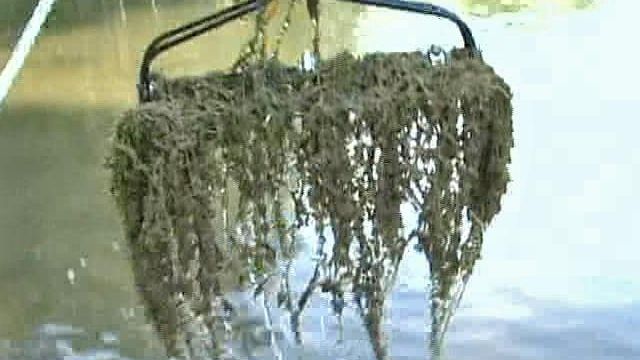Local News
Homeowners Fight Dreaded Aquatic Weed
Hydrilla can grow in almost any freshwater environment: springs, lakes, marshes or rivers. The weed’s stems can grow up to 25 feet in length, which endangers boats, swimmers and wildlife.
Posted — UpdatedROANOKE RAPIDS, N.C. — Hydrilla, a dreaded aquatic weed, is no stranger to homeowners on Lake Gaston.
But it’s not a problem just there. The weed is a cause for concern in more than 20 states – from Florida to Connecticut and west to California and Washington.
Five counties that border Lake Gaston split the $1.2 million cost of treating the weed, but many homeowners are digging deeper into their wallets. Controlling the weed’s growth can be a very taxing issue.
Hydrilla can grow in almost any freshwater environment: springs, lakes, marshes or rivers. The weed’s stems can grow up to 25 feet in length, posing a danger to boats, swimmers and wildlife.
About 3,000 acres of Lake Gaston contain Hydrilla. The plant arrived in the early 80s. Many believe a piece of it was attached to someone's boat, which was then put into the lake.
Tom Winebrenner lives on Lake Gaston. He and other property owners know what it's like to get mired in the muck of Hydrilla.
“We’ve lived in this house since 1995, and we’ve battled it for 12 years. It’s an every-year battle,” he said.
Every year, lake managers fight that battle and try to control the plant's growth. But the aquatic weed keeps coming back.
“It’s just an absolute nuisance,” said Wally Sayko, a Lake Gaston resident. “When you’re trying to get a WaveRunner or a boat out, it can impede your propeller, burn up engines. If you’re swimming, small children have to be careful you don’t become entangled in it.”
One of the main problems with Hydrilla is how quickly it can spread. Whenever the weed is shaken in the water, the seeds get stirred up and it can spread.
But how do you stop it? More than $1 million of public money has been spent on herbicide pellets. But many property owners go a step further and spend their own money to stop Hydrilla from reaching their house.
“Last year, I did not treat my own, and I had a great difficulty getting my boats in and out,” Winebrenner said.
While those who fight the weed said they’re making progress every year, they admit they are still far from ridding Lake Gaston of it.
• Credits
Copyright 2024 by Capitol Broadcasting Company. All rights reserved. This material may not be published, broadcast, rewritten or redistributed.





